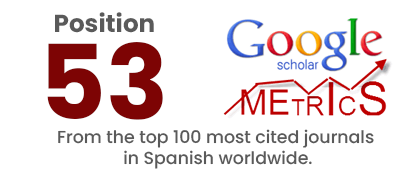The Effect of Consciousness-Raising Instruction on the Pragmatic Development of Agreeing and Disagreeing of Iranian EFL Upper Intermediate Learners in Speaking Performance
DOI:
https://doi.org/10.36097/rsan.v0i36.1016Keywords:
consciousness-raising (cr), pragmatic, discourse analysis, speech act, communicative competenceAbstract
Pragmatics, as a subfield of linguistics, plays a major role in learning a foreign language ( Crystal, 1997) and to make someone aware of something. Consciousness-raising tasks are designed. Accordingly, this study was done to investigate the effect of consciousness-raising instruction on the pragmatic development of agreeing and disagreeing of Iranian EFL upper intermediate learners in speaking performance. To fulfill the purpose of this study, on the basis of the result of English Unlimited Placement Test, 60 male and female upper intermediate EFL learners, aged 17 to 23, were selected out of 70. The participants were divided in two experimental and control groups. The experimental group was divided into three sub- groups including a role play group, a discussion group, and an interactive translation group. Each experimental group received different treatment on speaking performance. The way they were treated in these three experimental groups varied. This research was conducted at two English institutes located in Karaj, namely, Negarin and Zaban Tarjoman Language Centers. The study lasted for one term (i.e., 16 sessions). The quantitative data obtained were analyzed through SPSS to scrutinize the effect of the treatment. The results of a repeated-measures two-way ANOVA showed that there was a significant improvement in Iranian EFL learners’ application of agreement and disagreement structures while speaking. Meanwhile, in the control group the improvement was not statistically significant. Conclusions and Pedagogical implications are further discussed.
Downloads
References
Austin, John L., How to Do Things with Words, Clarendon, Oxford 1962.
Bardovi-Harlig, K., Hartford, B. A. S., Mahan-Taylor, R., Morgan, M. J., & Reynolds, D. W. (1991). Developing pragmatic awareness: Closing the conversation. ELT Journal, 45, 415-422.
Canale, M., & Swain, M. (1980). Theoretical bases of communicative approaches to second language teaching and testing. Applied linguistics, 1(1), 1-47.
Canale, M. (1983). From communicative competence to communicative language pedagogy. In J. C, Richards, & R. W. Schmidt (Eds.), Language and communication (pp. 2–27). London/New York: Longman.
Council of Europe (2001). Common European framework of reference for languages: Learning, teaching, assessment. Strasbourg: Language Policy Unit.
Crystal, D. (1997). English as a Global Language. Cambridge: Cambridge University Press.
Cunningsworth, A. (1987). Course books and conversational skills. In L. E. Sheldon. (Ed.), ELT textbooks and materials: Problems in evaluation and development (pp. 45-54). London: Modern English Publications.
Grice, H.P. (1973). Logic and conversation. In P. Cole, & J. L. Morgan. Syntax and semantics 3: Speech arts (pp. 41-58). New York: Academic Press.
Haukås, Å. (2014). Metakognisjon om språk og språklæring i et flerspråklighetsperspektiv. Acta didactica Norge, 8(2), 1–16.
Hymes, Dell H. (ed.) (1964a). Language in culture and society: A reader in linguistics and anthropology. New York: Harper & Row.
Hymes, D. H. 1972. Towards communicative competence. Philadelphia: University of Penn-
sylvania Press.
Hymes, D. H. 1972. Towards communicative competence. Philadelphia: University of Penn-
sylvania Press.
Hymes, D. (1972). Towards communicative competence. Philadelphia: University of Pennsylvania Press.
Hymes, D. (1974). Foundations in sociolinguistics: An ethnographic approach. The University of Pennsylvania Press: Pennsylvania.
Kasper, G., & Dahl, M. (1991). Research methods in interlanguage pragmatics. Studies in Second Language Acquisition, 13, 215-247.
Kasper, G. (1997). Can pragmatic competence be taught? Honolulu: University of Hawai'i, Second Language Teaching & Curriculum Center.
Kasper, G., & Rose, R. (1999). Pragmatics and SLA. Annual Review of Applied Linguistics, 19, 81-104.
Kasper, G. (2001). Classroom research on interlanguage pragmatics. In K.R. Rose, & G. Kasper (Eds.), Pragmatics in language teaching (pp. 33-60). New York: Cambridge University Press.
Kondo, S. (2008). Effects on pragmatic development through awareness-raising instruction: Refusals by Japanese EFL learners. In E. Alcón, & A.
Martínez -Flor (Eds.), Investigating pragmatics in foreign language learning, teaching and testing (pp. 153-176). Great Britain: Cromwell Press Ltd.
Leech, G. N. (1983). Principles of pragmatics. New York: Longman.
Littlewood, W. (1981). Communicative language teaching: An introduction. Cambridge: Cambridge University Press.
Lyster, R. (1994). The effect of functional-analytic teaching on French immersion student’s sociolinguistic competence. Applied Linguistics, 15, 263-287.
Newell, G.E., Beach, R., Smith, J., Van DerHeide, J. K., Kuhn, D., & Andriessen, J. (2011). Teaching and learning argumentative reading and writing: A review of research. Reading Research Quarterly, 46(3), 273-304.
Nguyen, M. T. T (2011). Learning to communicate in a globalized world: To what extent do school textbooks facilitate the development of intercultural pragmatic competence? RELC Journal, 42 (1), 17-30.
Richards J. C. (2006). Communicative language teaching today. New York: Cambridge University Press.
Rose, K. R., & Kasper, R. (2001). Pragmatics in language teaching. In K. R, Rose, & R., Kasper (Eds.), Pragmatics in language teaching (pp.1-12). Cambridge: Cambridge University Press.
Savignon, S. J. (1983). Communicative Competence: Theory and Classroom Practice. Texts and Contexts in Second Language Learning. Reading, Massachusetts at all: Addison-Wesley Publishing Company.
Searle J.R. (1969). Speech Acts, Cambridge University Press, Cambridge, Mass.
Svalberg, A. M-L. (2012). Peer interaction, cognitive conflict and anxiety on a grammar awareness course for language teachers. Language Awareness 21.
Sharwood-Smith M. (1981), “Consciousness-raising and the second language learner”, Applied Linguistics, Vol 11 (2), pp. 159- 168.
Savignon, S. (1997). communicative Competence: Theory and Classroom Practice. New York: McGraw Hill.
Szecsy, E. M. (2008). Communicative approach. In J. M. González (Ed.), Encyclopedia of bilingual education (pp. 156-158.). Thousand Oaks: SAGE Publications, Inc.
Taguchi, N. (2005). Comprehending implied meaning in English as a foreign language. Modern Language Journal, 89, 543-562.
Taguchi, N. (2007). Development of speed and accuracy in pragmatic comprehension in English as a foreign language. TESOL Quarterly, 41(2), 313-338.
Young, R. (1997). A critical-pragmatic theory of classroom talk. In B. Davies, & D. Corson (Eds.), Encyclopedia of language and education (pp. 11-20). Dordrecht: Kluwer Academic Publishers.
Kashisaz S, Mobarak E. The Effects of Private Education Institutes in Providing Modern Financial Knowledge in Developing Countries. Journal of Humanities Insights. 2018;02(04):172-8.
Aziz H, Abdolghader F. Investigation of International Students Quality on Educational Services. Journal of Humanities Insights. 2018;02(03):118-23.
Kheirabadi MA, Mirzaei Z. Descriptive valuation pattern in education and training system: a mixed study. Journal of Humanities Insights. 2019;3(01):7-12.


















